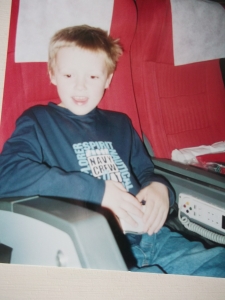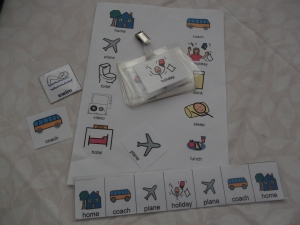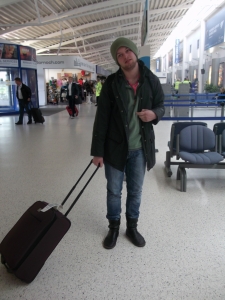The wind is rising – we must try to live (Valery)
 In my last post I mentioned that Dylan and I were about to take a railway tour in Scotland. I booked the holiday at new year when Dylan seemed a bit down; he’s not had an easy time since leaving school and it seemed to me he needed cheering up. Around that time, serendipitously, Dylan received a larger-than-usual payment from his father as the final settlement of a child maintenance arrangement.
In my last post I mentioned that Dylan and I were about to take a railway tour in Scotland. I booked the holiday at new year when Dylan seemed a bit down; he’s not had an easy time since leaving school and it seemed to me he needed cheering up. Around that time, serendipitously, Dylan received a larger-than-usual payment from his father as the final settlement of a child maintenance arrangement.
It’s possible as the parent of a disabled child (particularly one in need of long term care) to spend time worrying about planning for the future. It would have been easy for me, then, to bank the windfall. However, conscious that I was acting for Dylan, I considered the question I periodically ask: What would Dylan be doing now if he wasn’t autistic? Dylan is 20. At his age, some young people might use an unexpected gift from a parent to clear their student loan or avoid getting into further debt. Others might spend a cash bonus on a second hand car. No doubt plenty of 20 year old’s would upgrade their phone or buy a new gadget. At 20, I reminded myself, I had spent every last penny I had on travel. It was likely, I decided, that Dylan would choose to spend rather than save the money he’d received.
It was relatively easy to identify what Dylan would spend his money on – while his material needs are simple Dylan loves holidays. The short break rail holiday in Scotland I decided on presented itself as suitable and perfectly formed: three iconic rail trips (including one across Harry Potter’s viaduct) and a funicular, coming in on budget for the right sort of duration at the right sort of time and location. When I booked the holiday I had already taken Dylan on day trips by steam train (which you can read about here). This slightly longer break promised to be an extension of what had already proved a winning formula. There were, however, some features of the holiday which would be different and could be challenging. In particular, I had made an impetuous adjustment to our travel arrangements which, once made, caused me some trepidation.
A Bit of Stretch
 I have a habit of looking for opportunities to build ‘a bit of stretch’ into Dylan’s life. I have found that I can introduce new and potentially challenging experiences to Dylan providing I support these with some familiar routines and activities. Looking for ways of extending Dylan is good for two reasons. Firstly, if I don’t introduce new things to Dylan I am capping his potential for development and happiness. Secondly, the longer I leave it before introducing something, the more chance there is that Dylan will resist it when I do. When I booked the short break in Scotland it occurred to me that as Inverness, where our holiday would be based, was a relatively short distance from our local airport, it was a perfect opportunity to fly.
I have a habit of looking for opportunities to build ‘a bit of stretch’ into Dylan’s life. I have found that I can introduce new and potentially challenging experiences to Dylan providing I support these with some familiar routines and activities. Looking for ways of extending Dylan is good for two reasons. Firstly, if I don’t introduce new things to Dylan I am capping his potential for development and happiness. Secondly, the longer I leave it before introducing something, the more chance there is that Dylan will resist it when I do. When I booked the short break in Scotland it occurred to me that as Inverness, where our holiday would be based, was a relatively short distance from our local airport, it was a perfect opportunity to fly.
Flying might not seem like a big deal but for an autistic person it can involve significant preparation. Dylan had flown once before but he was only six at the time. Although he perhaps remembers his childhood trip, I wasn’t sure how much it was going to help Dylan. It seemed to me that Dylan may exhibit more anxiety about flying as an adult, particularly as he has developed a wariness of heights. Nonetheless I decided to try and build on his earlier experience as part of preparations.
 On the run-up to the holiday I showed Dylan a photograph of his previous flight, prepared some rebus symbols and taught Dylan the makaton sign for plane. It can be tricky to judge how much to share with Dylan and when to share it. I didn’t want lack of awareness to make Dylan anxious on the day but nor did I want to create anxiety with information he didn’t need. One day, out walking, an aeroplane passed overhead. I pointed to it then at the two of us and made the aeroplane sign. ‘Fall’, Dylan said looking at me anxiously.
On the run-up to the holiday I showed Dylan a photograph of his previous flight, prepared some rebus symbols and taught Dylan the makaton sign for plane. It can be tricky to judge how much to share with Dylan and when to share it. I didn’t want lack of awareness to make Dylan anxious on the day but nor did I want to create anxiety with information he didn’t need. One day, out walking, an aeroplane passed overhead. I pointed to it then at the two of us and made the aeroplane sign. ‘Fall’, Dylan said looking at me anxiously.
I love these moments when Dylan demonstrates that he is capable of complex thinking; his awareness of the material world, I realised, had developed enough for him to question the possibility of flight. Dylan is right of course. During the trip I was reading Julian Barnes’ remarkable book Levels of Life. Barnes reminds us that early aeronautics was considered to be not just a ‘supreme emblem of modernity’ (along with photography and electricity) but a form of magic. In the beginning, Barnes writes: birds flew, and God made the birds. Angels flew, and God made the angels. Men and women had long legs and empty backs, and God had made them like that for a reason. (Barnes, 2014, p.11). But don’t worry, I told Dylan: we will not fall.
 It was good for me to focus on Dylan’s worries about the trip instead of on my own. One of my anxieties focused on luggage. Apart from the trip to the USA we have only taken holidays with Dylan by car. This is partly because private transport is flexible and allows a swift response to individual need. It is also, however, for the convenience of transporting the things required to maintain Dylan’s routines. I remember one holiday when we travelled with 12 cans of macaroni cheese in the boot of the car. We would often take a small TV set with us so that Dylan could watch his videos. Later a portable DVD player was a huge help – though Dylan insisted on travelling with large numbers of DVDs. Recently I’ve been trying to introduce an i-pad in order to travel light but with only limited success. How, I asked myself, was I going to manage the flight to Scotland?
It was good for me to focus on Dylan’s worries about the trip instead of on my own. One of my anxieties focused on luggage. Apart from the trip to the USA we have only taken holidays with Dylan by car. This is partly because private transport is flexible and allows a swift response to individual need. It is also, however, for the convenience of transporting the things required to maintain Dylan’s routines. I remember one holiday when we travelled with 12 cans of macaroni cheese in the boot of the car. We would often take a small TV set with us so that Dylan could watch his videos. Later a portable DVD player was a huge help – though Dylan insisted on travelling with large numbers of DVDs. Recently I’ve been trying to introduce an i-pad in order to travel light but with only limited success. How, I asked myself, was I going to manage the flight to Scotland?
Dylan, I realised, was going to have to accept that he couldn’t take his usual pile of books and DVDs with him. A few days before the holiday I decided that as well as taking fewer things Dylan would have to take responsibility for his own belongings. This, I thought, could be challenging. Dylan is physically able and stronger than I am so the issue was not the weight but his willingness to carry. There was also the issue of keeping his luggage with him (it was possible he’d abandon it) and, probably crucially, his awareness of other travellers. To encourage a sense of responsibility for his luggage I took Dylan to choose his own trundle case. I was surprised when he insisted on aubergine – not the colour I would have picked out and a good reminder that I don’t always know what Dylan likes. We spent two hours in the city centre practising walking with the case: abandoned once and rolled over twice but no scraped ankles. Fingers crossed for Manchester Airport.
Lounges, Walkways and Yellow Lines
Airports are not an ideal environment for autistic people: they are noisy and crowded, usually involve queues and waiting, may be subject to unplanned changes to schedule, and present sensory challenges particularly in relation to sound and touch. On the face of it, this is not an environment you’d enter unless you absolutely had to or the benefits far outweighed the costs. For us, this was exactly the point: in case Dylan ever needed to fly, I wanted to have done what I could to prepare him; if it turned out Dylan could cope – well that would open up a whole new world.
I know when Dylan is experiencing sensory challenge because he has developed a strategy for blocking. He scrunches his eyes up, twists his head to one side, towards the sky, and marches stiff-limbed past the source of disturbance. Sometimes Dylan blocks both ears with a single arm clamped over his head though he can do this, I think, for reasons other than sensory disturbance.
It was clear that Dylan experienced sensory disturbance in specific locations in the airport. However, it wasn’t where I would have predicted. The airport lounges were fine, as was the aeroplane itself. For Dylan, the problem areas were the connecting inside walkways (tube-shaped and clinical). The moving floors helped compensate; Dylan loved these enough to cope with the weird acoustic tunnels. Outdoor walkways at the airport, by contrast, were a huge hit. A yellow line on the floor to direct passengers between terminals was a massive help when covering the distance between the railway station and Terminal 3; Dylan understood and enjoyed walking the line which meant I didn’t need to guide him through a busy environment.
I had booked a flight which left enough time for us to get to Inverness by train if Dylan wouldn’t board. Although our flight was at 9am on a weekday morning Terminal 3 was calm. This is no doubt because it is the domestic rather than international terminal. I’m sure this helped; introducing air travel on a short flight, via a local airport, was probably sensible. The other thing which helped was having alerted the airline (in this case Flybe) to the fact that I was travelling with a disabled passenger who may or may not board and who might need adjustments.
Although Flybe are a small budget airline I can’t fault their service and care. They were flexible about making adjustments, happy to take their lead from us and to respond to Dylan’s individual needs. Seat reservations and boarding priority were made for Dylan then adjusted in response to how well he was coping. At Manchester Airport, Flybe paged us to check that all was well when we didn’t present for early boarding. Sensitive adjustments were also made to customs checks; Dylan was given the time he needed to remove items for the scanner and allowed to carry his Thomas The Tank Engine book through the security arch. Everyone in the chain of customer service appeared to be aware of and expecting Dylan on the flight that day. This made an enormous difference to our feelings about the trip and thus to its success.
The trickiest moment? Undoubtedly baggage check. That aubergine trundle case turned out to be a big hit. So just why should I expect Dylan to let it go chugging along some rubber belt and topple off the end into the abyss? Would he let go of his new case with his favourite sneakers and hats in? After all my exhortations to him to ‘keep hold of your case Dylan’? Of course not.
I did, eventually, persuade Dylan to put his case on the conveyor belt though he wasn’t happy about it. The return journey, though, reminded me how quickly Dylan can learn; this time he checked-in his baggage like a pro. Inverness Airport is small and, again, the calm atmosphere was great for Dylan; while we were waiting to board I noticed Dylan’s little aubergine case being uploaded to the hold. Look Dylan, I said – there goes your case. But, already a nonchalant flyer, my boy wasn’t interested.
Cloudland
Written following the death of his partner, Barnes’ book The Levels of Life is a study of grief using the metaphor of flight. Tracing the early flights of pioneering balloonists, Barnes quotes Dr J.A. C. Charles, a physicist, who made the first ever ascent in a hydrogen balloon on 1st December 1783:
When I felt myself escaping from the earth, my reaction was not pleasure but happiness… It was a moral feeling, I could hear myself living, so to speak. (Barnes, 2014, p. 12)
As we lifted off from Manchester Airport, and gained height, I thought I could hear Dylan living, his face not just pleasure but happiness. ‘Snow?’ he said to me with the rising intonation in his voice I have noticed recently, and which suggests he understands the role and purpose of question. ‘Clouds’ I replied. ‘They look like snow. But they are clouds’.
 I don’t know whether Dylan knew the word ‘clouds’ before last week or if he had paid them much attention before. I like to think that they were part of Dr Charles’ moral feeling and that they also contributed to what the actress Sarah Bernhardt described, after her short balloon flight, as ‘not silence, but the shadow of silence’. This seemed to be an appropriate place for my son whose world is, if not completely silent, then one around which the shadows of silence have been thrown.
I don’t know whether Dylan knew the word ‘clouds’ before last week or if he had paid them much attention before. I like to think that they were part of Dr Charles’ moral feeling and that they also contributed to what the actress Sarah Bernhardt described, after her short balloon flight, as ‘not silence, but the shadow of silence’. This seemed to be an appropriate place for my son whose world is, if not completely silent, then one around which the shadows of silence have been thrown.
Barnes tells us that Bernhardt felt the balloon to be ‘the emblem of uttermost freedom’ and Felix Tournachon, another early aeronautist, referred to:
the silent immensities of welcoming and beneficent space, where man cannot be reached by any human force or by any power of evil, and where he feels himself live as if for the first time. (Barnes, 2014, p. 13)
Although Dylan and I weren’t in a hot air balloon last week, we were in a smaller aeroplane than I had anticipated. I had been alarmed at Manchester airport to find that we were expected to walk across the tarmac to a plane which appeared to have propellers. Oh dear. In all the preparations for Dylan I had forgotten to remember that I did not enjoy flying. In the event it was me, not Dylan, who needed support. I had only ever flown in jumbo jets. This experience was quite different; I could see the cockpit and the pilot’s face and could feel every rush and tremble of air around us. For Dylan, this was marvellous, but while he was living as if for the first time, I was fretting as if it were my last. As we landed at Inverness I was the one clutching onto Dylan. ‘Whoops!’ he laughed at me. ‘Bump!’
Barnes tells us that on her flight in the Doña Sol in 1878 Sarah Bernhardt drank champagne from a silver goblet and ate tartines de foie gras and oranges. Fred Burnaby, meanwhile, is reported to have taken two beef sandwiches, a bottle of Apollinaris mineral water and a supply of cigars on his 1882 trip in The Eclipse. It was not, apparently, recorded what food Felix Tournachon and his travelling companions took with them on their trip in the ultimate balloon, The Giant, in 1863. I am able to report, however, that Dylan ate fruit pastilles and drank a fruit shoot during his 2014 flight from Inverness to Manchester.
In his book Levels of Life Barnes brings together ‘things that have not been put together before’ in order to show us how the world can be changed. Love, Barnes writes: ‘is the meeting point of truth and magic. Truth, as in photography; magic, as in ballooning’ (Barnes, 2014, p. 37). Dylan reminded me, throughout our time in the air, of the magic which is flight. Dylan’s world, I realised as I photographed the clouds, had been changed utterly.
Aeroplanes are beautiful cursed dreams waiting for the sky to swallow them up (Hayao Miyazeki)
Reference:
Julian Barnes, (2014) Levels of Life. Vintage








I love you blog, as ever. There is so much beauty in what you write. It is very brave to have gone on the flight, the myriad of things that could go so wrong. But you are right, it is so important within this regimented scheduled comfort zone we make changes and stretch boundaries. At school, I insisted my daughter go to Code Club to learn computer coding, she loves computers, if I let her withdraw from everything because it is easy I am failing her. I am so proud of her going, I know it was worth the anxiety, tears and sleepless nights.
We haven’t attempted a flight yet with all the kids, I am worried and scared she will have a meltdown, she is a big girl now it can be hard to hold her if she has sensory overload and tries to bolt. I know we need to do it, my middle girl is desperate to go somewhere new. She is 6 but has such a thirst for new places and new things. Something of the things you mentioned, like the moving walkway are really useful I can see this causing her problems. It is so hard to predict where the problems will come.
So good luck and well done and thank you for writing, your words help me a lot.
Tinc
LikeLike
Hello Tinc – good to hear from you and thanks for your lovely comment and for saying I was brave. I didn’t feel very brave before the flight – I didn’t sleep at all the night before we flew. In a strange way I think that helped on the day. I was too exhausted to get anxious 🙂 It sounds as if you know about the importance of stretch and of doing things which are sometimes a bit scary. It also sounds as if you might fly one day! Well, it’s taken me until Dylan is 20, discounting the trip when he was much younger. I do recommend starting small and domestic – Inverness airport in particular was so calm and peaceful. Good luck! Liz x
LikeLike
This particular article is so full of, well they are your insights, but they are gifted to us. It’s so illustrated. I’m very happy for you and Dylan that it went so well and the airline was accommodating and… I’m just so pleased for y’all. Thank you for sharing this.
LikeLike
Thank you 🙂
LikeLike
I enjoyed this immensely. My kids both have been treated for anxiety from a young age, so I resonated greatly with the meticulous planning that went into making this vacation such a success for both you and Dylan. And I’m so excited to read about the new Barnes book– I have just logged a request for it at the library!
LikeLike
Hi there – nice to hear from you! It’s interesting that your experience resonates – I can see how the preparations I use to support Dylan would also be really helpful for anxiety (in fact they probably help keep mine under control). Glad you have requested the Barnes book. I’m often struck by the way loss and grief can give rise to startling creativity, but this is a very special book indeed. Hope you enjoy!
LikeLike
Liz– I wanted to come back to tell you that I have finished reading Levels of Life. What an exquisite little book! I am so grateful to you for introducing it to me. His opening words are, in my view, a description of the essence of creativity– “You put together two things that have not been put together before . And the world is changed.” And this bit of poetry– “Every love story is a potential grief story.” Such perfect writing. I try to restrict my book addiction to the library to ward off bankruptcy, but this is the sort of book that I might have to buy a copy of so that I can go back and read it again. The raw accounts of his grief were reminiscent of parts of Joan Didion’s Year of Magical Thinking, and I think I shall now need to re-read that.
I have, meanwhile, spent a good portion of the day immersed in The Marriage Plot by Jeffrey Eugenides. Have you read it? I’m enjoying it immensely and reliving all sorts of memories (the good, the bad, AND the unrepeatable) of my university days. The irony is, I’m reading it for book club and I wasn’t at all enthusiastic about it until I started reading it, and now I can’t put it down. I like that about my book club– it gets me reading things I might not have chosen for myself.
Cheers. — Anna
LikeLike
Hi Anna – I am SO glad you enjoyed the Barnes! Like you I love that reference to putting unusual things together – I’ve thought a lot about it since reading the book and realised this is what poets do (through metaphor most obviously) and that making unusual associations is, as you say, the essence of creativity. I hadn’t connected the Didion book but you’re right about the link (another book I enjoyed). I haven’t read the Eugenides but will order it now – love the idea that we have exchanged reading recommendations on here as an aside 🙂 I have almost finished Barbara Kingsolver’s Flight Behaviour (about which I found myself critical technically but I am glad I read it) so am ready for the next recommendation. Though I have John William’s Stoner in the queue – I have only just heard about it (seems to be acquiring cult status here). I suspect it might be perfect reading for a jaded academic 🙂 Have you read it? Lucky you having a book club! Liz
LikeLike
I haven’t seen either of those books– so much to read, so little time!
I started the book club when my eldest was an infant. It was an act of self- defence– to ensure that I would have an excuse to a) read something longer than a magazine article, and b) get out of the house at least once a month to do something for ME. It has lasted in various iterations for 20 years. Members have come and gone– there are just 2 of us left from the original group, and the format has evolved over the years. Currently we meet about 6 times a year for Sunday brunch at each others’ homes. Actually FINISHING the book is optional, but we’ve a very diverse group and we always have a great conversation — Anna
LikeLike
The reading group sounds wonderful Anna – the sort of thing to make me wish I were in Winnipeg 🙂 I’m sure there are such things where I live. I think I’ve spent my energy on going to writing rather than reading groups over the years – I’ve limited time for myself (for acts of self-defence as you so aptly describe it) and have chosen to spend it that way. The idea of a reading group is increasingly attractive though – I can see all the benefits such as opening up new reading directions, new ways of thinking about a text, plus the sense of community etc (and hidden in that ‘etc’ is brunch!). Maybe I should explore the options. Yes, so much to read, so little time!
LikeLike
Well if you were in Winnipeg you would most certainly be welcome to join us! We’re due to work up a new reading list at the end of June (we don’t meet in July and August because that’s summer vacation season here). I will send you our list and you can read along. Actually — that’s given me an idea for a new feature for my blog. Perhaps I could create a virtual extension of my book club. Hmm….
LikeLike
Thank you for saying I’d be welcome to join you – I realised I’d threaten to crash your group from a safe distance 🙂 I would love to see what you’re reading. And I love your musings on a virtual book club. What an interesting idea. Hmm. I will watch your blog with interest…
LikeLike
This is wonderful! I like the way surprises keep appearing in the story (which is a story that begins with and is framed by careful planning and preparations) — the unexpected color of the suitcase, the unsuspected challenge of the acoustic tunnels, the delightful irony of the baggage check. And then the surprise at the end, where Dylan reminds you of the pleasure of flight. I wondered if the surprises and plans were not pointers to the greater pairing of revelation and knowledge which is part of all loving relationships and which is so evident in this story. If, as Barnes said (I haven’t read the book, but I think now I will), love is where magic and truth meet, then this is indeed a tale of love. Thank you.
LikeLike
Thank you Stefanos! I’m glad you liked the surprise of the aubergine suitcase 🙂 It’s a small detail but often these are the things which charm me most. Actually, the first time D selected his own clothes, some years ago, a purple and pink t-shirt was what he picked out – so I should probably try and remember that he likes purple. I’m so glad you read it as essentially a story about love. I was hesitant to draw too close a connection with the Barnes, as his narrative is concerned with the love for a partner. However, the connection is there as you note – the intimacy which comes from living alongside someone and caring for them…
LikeLike
Pingback: May Is The Cruellest Month | Living with Autism
Pingback: Summer Is Now Scheduled (with a scaffold and a safety net) | Living with Autism
Pingback: In Praise Of Groups | Living with Autism
Pingback: Learning Through Dialogue: reflections on blogging (ii) | Living with Autism
Pingback: Day 35: Steam Service Is Resumed | Living with/out Autism